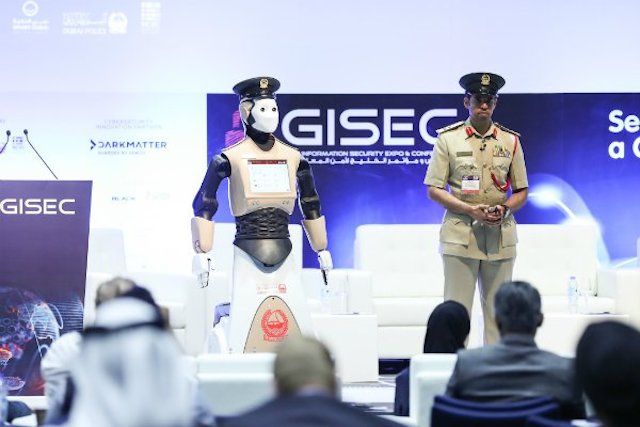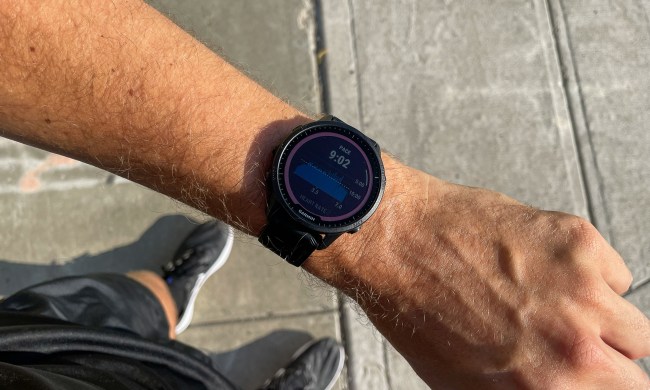
The robotic officer went on duty on Tuesday and could be the first of many to start work for the Dubai Police Force.
Shown off this week at the Gulf Information Security and Expo Conference, the new employee is identifiable as a cop thanks mainly to the police hat perched on its head. It stands at a not-too-imposing 1.5-meters, weighs 220 pounds (100 kg), and features a touchscreen display on its torso that can be used to report crimes and even pay fines for things such as traffic violations.
The crime-busting android moves around on wheels, can speak six languages, and has the ability to detect a person’s emotions and facial expressions, and respond accordingly, local media reported. That sounds very similar to SoftBank’s Pepper robot, but the newest addition to Dubai’s police unit is actually the work of Spain-based PAL Robotics with a number of skills added by Google and also IBM with its Watson AI system.
PAL Robotics describes its creation as a “full-size humanoid service robot” that can navigate autonomously or be piloted remotely. It can function for eight hours on a single charge and is capable of a battery “hot-swap,” meaning that if it’s chasing after a suspect toward the end of a shift, its battery can be changed mid-chase without having to waste time powering down.
Commenting on its latest recruit, a spokesman for Dubai Police said, “With an aim to assist and help people in the malls or on the streets, the Robocop is the latest smart addition to the force and has been designed to help us fight crime, keep the city safe, and improve happiness levels.”
While we can’t imagine Robocop in its current form sorting out a bar brawl, solving a complex fraud case, or rescuing a cat from a tree, it may well prove effective for receiving crime reports, giving directions, and — thanks to that hat — presenting an air of authority wherever it goes. And as the technology develops it’ll be in a position to take on an increasing number of responsibilities.
If the law-enforcing robot proves successful, Dubai wants to use more of them to make up 25 percent of its police personnel by 2030. It even has plans to build the world’s first “smart police station” containing zero human employees. In a city very much known for its outlandish projects, who’s to say they can’t achieve it.



